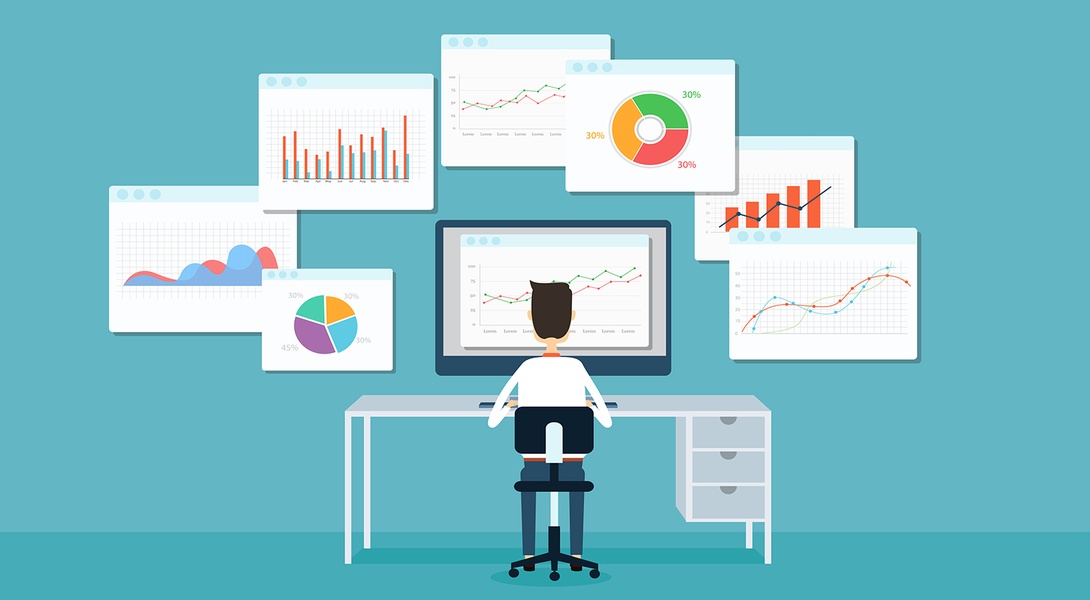“I would really like to, but my platform won’t support it.”
A phrase that many eCommerce marketing professionals have uttered at least once in their careers. An admission that their eCommerce platform is holding them back and they are staring at only two options to move forward – stay put and manage the outdated platform or go full steam with an expensive and messy platform upgrade.
While the decision to stay put seems like a no-cost option, missing out on new opportunities because your commerce engine isn’t up to the challenge adds up quickly. Not only that, you’re just delaying the inevitable platform upgrade resulting in wasted time and resources.
Achieving a good balance between a marketing team that wants to move fast, test, and adapt repeatedly and a tech team that wants predictability and stability has always been a challenge in the eCommerce world. So, how can you build a presence online that’s both dynamic and adaptable, yet stable and secure?
This is where the benefits of a headless commerce platform come into play. Building your eCommerce business and customer experience on top of a headless commerce platform means you can keep the CMS you know and love, get the eCommerce technology you want, and have the flexibility to connect them. Headless is your eCommerce platform’s liberation.
Flexible Architecture Creates Possibilities
At its core, headless commerce involves separating the frontend and backend of your eCommerce architecture to open up your options for delivering content, products, or customer experiences. Traditional eCommerce platforms come standard with a presentation layer that’s tightly integrated with the backend, limiting your choices for what type of frontend experience you can deliver. Headless commerce sidesteps this problem and gives you the flexibility you need to speak to your customers in any way you want.
Marketing Challenge #1: Rolling out new initiatives
As a marketer, there are countless reasons why you might explore launching another storefront or mini-site. A new product line, brand, or spin-off, for example. Sounds great, but with a traditional commerce platform, you’ll have to use its included display options.
How headless architecture can help:
With headless architecture, the new initiative you want to launch is just another connection to your headless commerce platform. Create the frontend in whichever CMS or your team is interested in. The products, account, and order information are all pulled through the headless commerce API – a central collection of everything eCommerce.
Headless architecture opens up your options in deploying new sites, giving you the freedom to roll out new pages in days instead of months. This speed to market can contribute significantly to ROI. Marketing is often a game of who can get there first, and traditional eCommerce platforms lack the adaptability that most companies need to deploy new sites quickly. This flexibility is just one example of how headless lets you dynamically alter your marketing strategies based on whatever market opportunities, trends, or initiatives come your way.
- Launch microsites, storefronts, blogs, and new experiences that connect to a single eCommerce platform. No more multiple platform pain!
- Get design flexibility and improve your delivery speed; launch more and do it faster.
Marketing Challenge #2: Add commerce functions
“I have all this great data and customer profile information, but I can’t do anything with it. It’s trapped.”
Sound familiar? Adding integrations to a tightly-integrated eCommerce platform is a hassle. When platforms aren’t designed around complete API architectures, it can be difficult to get all the information you need from them. You shouldn’t need to interrogate your platform for data or to connect to a 3rd party. A modern commerce platform expects that it’s going to connect to external resources to both provide data and consume data. In addition, the data format is predictable and logical, imagine if you’re trying to connect to a 3rd party and you can’t speak the same language? It’s a missed opportunity and expensive to work around.
How headless architecture can help:
On the flip side, adding commerce integrations to a flexible headless system is a breeze. With the fully-featured and API-friendly backend running separately from the front end, developers can easily integrate new APIs, applications, or systems and create shopping carts to build out new product lines, integrate with a back-office ERP, or sync with a marketing automation engine. It’s all possible through a headless implementation.
- It’s easy to forget that “headless” means much more than just building eCommerce shopping experiences. Headless is really a reference to an API-first architecture.
- When the entire platform and eCommerce dataset is available through an API, you can integrate your entire business together including back-office, ERP, inventory, marketing, and much more.
Marketing Challenge #3: Support New Technologies
“There’s a new version of our eCommerce platform available – it’s new, it’s better, and has some amazing features. But upgrading will break your entire storefront.”
What happens when your web store begins to show its age? Or when it falls behind your competitors? With traditional eCommerce architecture, you’re forced to update the frontend and the core eCommerce platform at the same time. It’s crucial to update your frontend and user experience, but it’s so connected with the backend platform that you can’t separate the two.
This leaves you with two choices – update the frontend and backend together (and accept all the issues that will come with that) or stay as-is and wait a bit longer, ceding ground to the competition. It’s a no-win scenario.
How headless architecture can help:
Headless architecture provides you with an opportunity to get around this issue and future-proof your company’s eCommerce experience. Every company outgrows its platform as they scale, and as we know, finding an entirely new platform to add one or two specific functions isn’t an option. But through headless, marketers can add new technologies, applications, channels, or touchpoints as needed to get a better handle on their data. This is a great way to get visibility into performance metrics and other marketing data that you can use to support long-term decisions.
- Implementing a new headless eCommerce platform doesn’t mean you have to redesign or rework your front end. You may be able to leverage the existing design elements and integrate that with the new headless platform
- Be surgical with replacement if possible. If the migration is happening from an older platform, carving out the eCommerce functionality into a headless experience does not necessitate that the entire system (enterprise-wide system such as ERP, etc.) be replaced.
Marketing Challenge #4: Expand Your CMS Choices
Most traditional eCommerce platforms have built-in content management systems (CMS) that restrict you to using predetermined themes and templates for the frontend. These limitations are a giant roadblock for brands looking to promote their individual look and creative messaging.
How headless architecture can help:
Content is the fuel that drives your marketing engine; it brings customers into your funnel and helps prime them for outreach down the road. And with a decoupled architecture, you’ll have more flexibility than ever in how you present these options. This makes headless a particularly good choice for content-driven brands who want to push their messaging but are restricted by their integrated eCommerce platform.
- The ideal scenario is when the content and eCommerce are two distinct platforms because then you are free to select the best option for each.
- Investigate hybrid eCommerce platform options that provide a simple, bare-bones CMS option, but are also API-driven.
Marketing Challenge #5: Create unique customer experiences
Is your current eCommerce platform designed to provide exceptional experiences to customers across every channel they are on? Does your marketing team have the flexibility to design, build and deploy the type of storefronts to support these channels? How unique an experience can you deliver?
Beyond a single web-focused customer experience – it’s now a given that the customer journey crosses apps and other platforms—website, mobile, social media, and so on needs to be connected for a business to stay competitive. Tightly-integrated eCommerce platforms don’t make this type of customization easy; even small changes to the front or back can disrupt the overall presentation.
How headless architecture can help:
Headless, on the other hand, is designed to make this simple. With an adaptable infrastructure, you can make any integrations or changes you need to deliver cutting-edge customer experiences without any risk to your backend.
- Headless implementations give you the flexibility to create consistency between channels – from web to mobile and more.
- CMS freedom – if you or your team are comfortable with a particular content management system, you can continue to use it with the design options that come with it.
Marketing Challenge #6: Managing Budget
Marketers understand well, the hidden costs that come with eCommerce delivery. Each add-on, platform, or vendor system you’ve integrated into your system comes with a cost, and as these integrations stack higher and higher, it’s easy for these costs to get lost in the shuffle. Fees for licensing, hosting, and support for each of these systems may eat away at your budget.
How headless can help:
Headless breaks down this system and offers a different way of viewing your eCommerce platform. With the front and back separated, it’s easy to see which features contribute the most and which may be unnecessary.
- The eCommerce platform cost is likely to include resources, hosting, and monitoring for a CMS environment you might not be using. Decoupling allows you to search out CMS hosting pricing that works best for your company.
- Be aware that the platform “cost” includes not only purchasing and upgrading your plugin-heavy platform, but also the time to manage, update, install and monitor those plugins.
The Marketing Potential of Headless Architecture
Although headless commerce implementations might seem like they address technical issues, they have the potential to revolutionize how your company manages marketing, updates, and operates online. If you’re looking for new ways to reach your customers, consider a headless approach that makes the complex simple and lays everything out from end-to-end. It’s not a trend or a fad—it’s a different way of leveraging your existing eCommerce assets that is long overdue.


